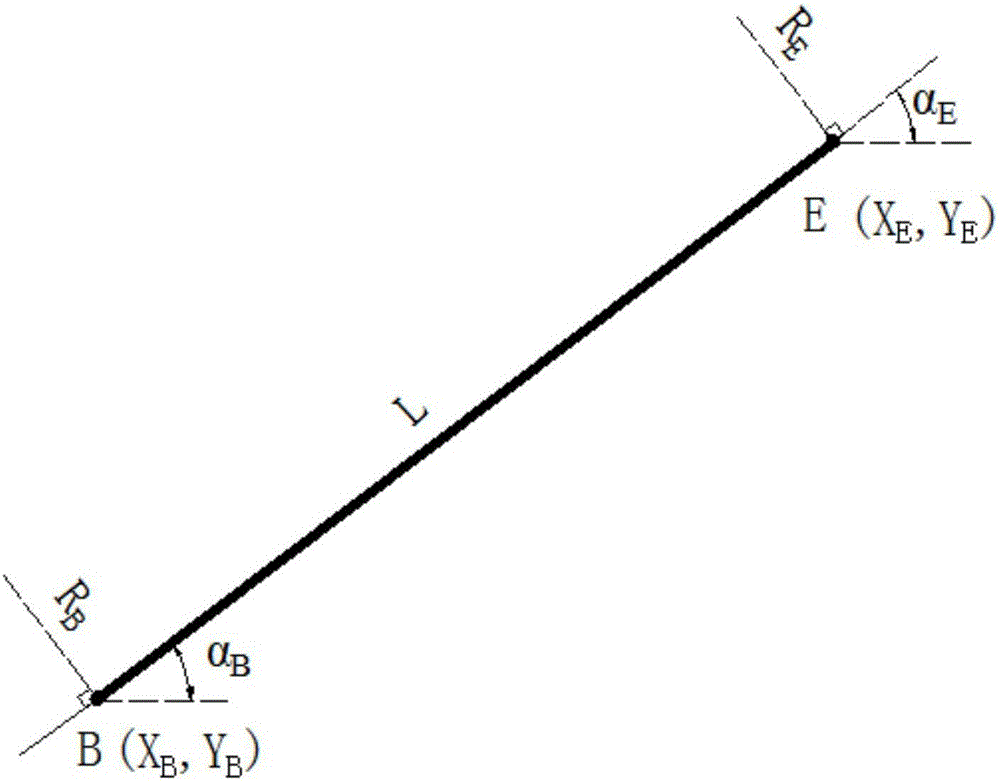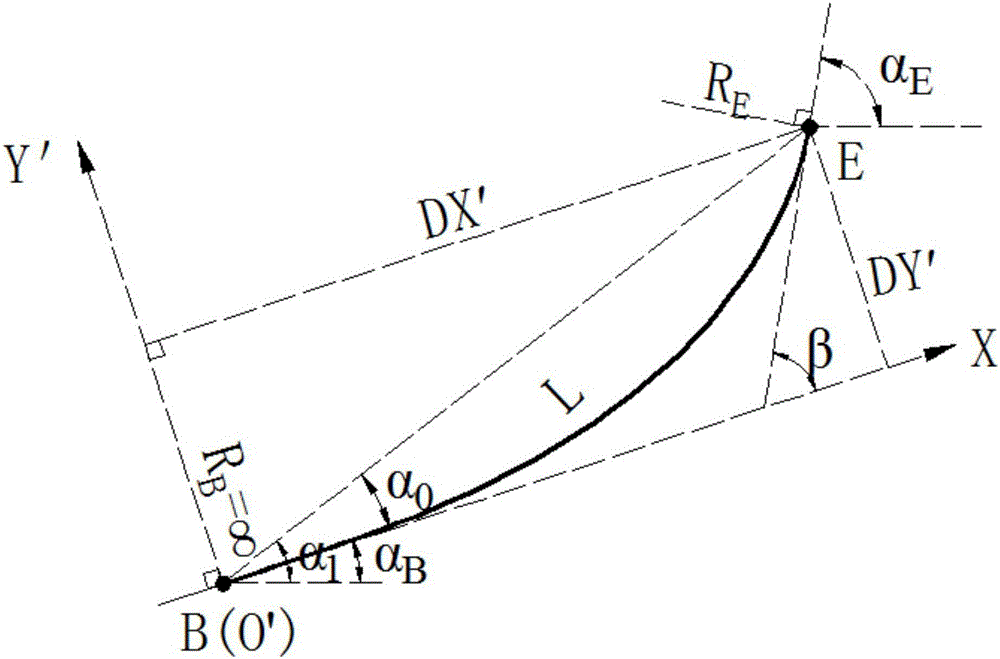A "two-point" line-element method for planar alignment design of road routes
A line element method and line element technology, which is applied in the field of planar alignment design of road routes, can solve problems such as lack of flexibility, shape of line element, end point position and tangent direction of end point, etc.
- Summary
- Abstract
- Description
- Claims
- Application Information
AI Technical Summary
Problems solved by technology
Method used
Image
Examples
Embodiment Construction
[0163] Step 1: Determine the relevant parameters of the starting point B of the line element
[0164] It is necessary to determine the starting point B coordinate of the line element (x B ,y B ), starting point tangent angle α B and starting radius R B There are 3 independent parameters in total.
[0165] If it is the first line element, the coordinates of the starting point B adopt the coordinates of the starting point A of the road section, that is, x B =x A 、y B =y A ; Need to set the starting point tangential angle α separately B and starting radius R B .
[0166] For the rest of the line elements, according to the principle of linear continuity, it is only necessary to change the position of the end point E and the tangential angle of the end point α of the previous completed line element E and end radius R E As the starting point parameter of the current design line element, namely: x B =x E 、y B =y E , α B = α E , R B = R E .
[0167] where tangent l...
PUM
 Login to View More
Login to View More Abstract
Description
Claims
Application Information
 Login to View More
Login to View More - Generate Ideas
- Intellectual Property
- Life Sciences
- Materials
- Tech Scout
- Unparalleled Data Quality
- Higher Quality Content
- 60% Fewer Hallucinations
Browse by: Latest US Patents, China's latest patents, Technical Efficacy Thesaurus, Application Domain, Technology Topic, Popular Technical Reports.
© 2025 PatSnap. All rights reserved.Legal|Privacy policy|Modern Slavery Act Transparency Statement|Sitemap|About US| Contact US: help@patsnap.com



